Rear-facing child restraint installation using the seat belts

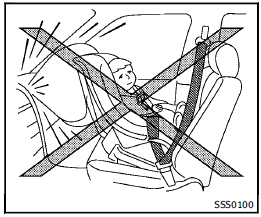
 WARNING
WARNING
► The three-point seat belt with Automatic
Locking Retractor (ALR) must be used
when installing a child restraint. Failure
to use the ALR mode will result in the
child restraint not being properly secured.
The restraint could tip over or be
loose and cause injury to a child in a
sudden stop or collision.
► When installing a child restraint system
in the 3rd center seat position, both the
center seat belt connector tongue and
buckle tongue must be secured. See “3rd
row center seat belt” earlier in this
section.
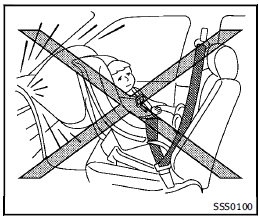
Rear-facing — step 1
Refer to all Warnings and Cautions in the “Child safety” earlier in this section and “Child restraints” earlier in this section before installing a child restraint. Follow these steps to install a rear-facing child restraint using the vehicle seat belts in the rear seats: 1. Child restraints for infants must be used in the rear-facing direction and therefore must not be used in the front seat. Position the child restraint on the seat. Always follow the restraint manufacturer’s instructions.
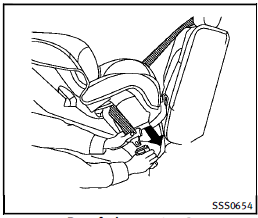
Rear-facing — step 2
2. Route the seat belt tongue through the child restraint and insert it into the buckle until you hear and feel the latch engage. Be sure to follow the child restraint manufacturer’s instructions for belt routing.
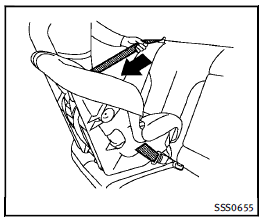
Rear-facing — step 3
3. Pull the shoulder belt until the belt is fully extended. At this time, the seat belt retractor is in the Automatic Locking Retractor (ALR) mode (child restraint mode). It reverts to the Emergency Locking Retractor (ELR) mode when the seat belt is fully retracted.
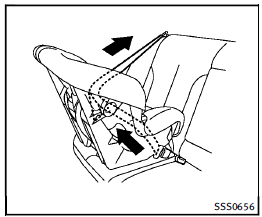
Rear-facing — step 4
4. Allow the seat belt to retract. Pull up on the shoulder belt to remove any slack in the belt.
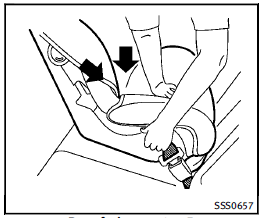
Rear-facing — step 5
5. Remove any additional slack from the seat belt; press downward and rearward firmly in the center of the child restraint to compress the vehicle seat cushion and seatback while pulling up on the seat belt.
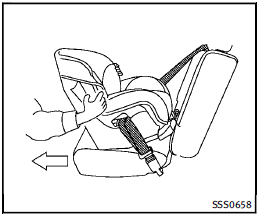
Rear-facing — step 6
6. After attaching the child restraint, test it before you place the child in it. Push it from side to side while holding the child restraint near the seat belt path. The child restraint should not move more than 1 inch (25 mm), from side to side. Try to tug it forward and check to see if the belt holds the restraint in place. If the restraint is not secure, tighten the seat belt as necessary, or put the restraint in another seat and test it again. You may need to try a different child restraint. Not all child restraints fit in all types of vehicles. 7. Check to make sure that the child restraint is properly secured prior to each use. If the seat belt is not locked, repeat steps 1 through 6. After the child restraint is removed and the seat belt fully retracted, the ALR mode (child restraint mode) is canceled.
See also:
Anti-lock Braking System (ABS)
WARNING
► The Anti-lock Braking System (ABS) is a
sophisticated device, but it cannot prevent
accidents resulting from careless or
dangerous driving techniques. It can
help maintain v ...
Servicing air conditioner
1. OFF button
2. Fan speed increase (+) button
3. AUTO button
4. Temperature increase ( )
button
5. Temperature decrease ( )
button
6. Display
7. Fan speed decrease (-) button ...
USB memory operation
Audio main operation
Open the tray lid and connect a USB
memory 1 as illustrated. Then, push the
DISC·AUX button repeatedly to switch to
the USB memory mode.
If the system has been turned o ...
